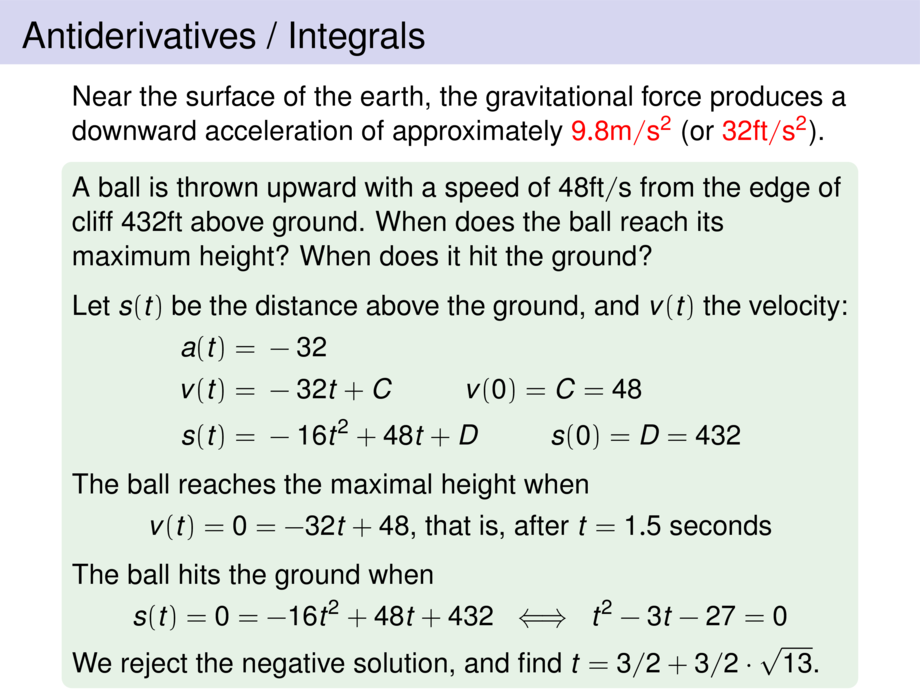



































































































116/116
\begin{frame}
\frametitle{Antiderivatives / Integrals}
Near the surface of the earth, the gravitational force
produces a downward acceleration of approximately \alert{$9.8\text{m}/\text{s}^2$} (or \alert{$32\text{ft}/\text{s}^2$}).
\pause
\begin{exampleblock}{}
A ball is thrown upward with a speed of $48\text{ft}/\text{s}$
from the edge of cliff $432$ft above ground.
When does the ball reach its maximum height?
When does it hit the ground?
\pause\medskip
Let $s(t)$ be the distance above the ground, and $v(t)$ the velocity:\pause\vspace{-.5ex}
\begin{talign}
a(t) &= \mpause[1]{-32} \\
\mpause{v(t) &= }\mpause{-32t} \mpause{+ C} \hspace{1cm}\mpause{v(0) = C = 48} \\
\mpause{s(t) &= }\mpause{-16t^2} \mpause{+ 48t} \mpause{+ D} \hspace{1cm}\mpause{s(0) = D = 432}
\end{talign}
\pause\pause\pause\pause\pause\pause\pause\pause\pause\pause\pause
The ball reaches the maximal height when \pause\vspace{-.5ex}
\begin{talign}
v(t) = 0 \mpause[1]{= -32t + 48} \mpause{\text{, that is, after $t = 1.5$ seconds}}
\end{talign}
\pause\pause\pause
The ball hits the ground when\vspace{-.5ex}
\begin{talign}
s(t) = 0 \mpause[1]{= -16t^2 + 48t + 432} \mpause{\;\iff\; t^2 - 3t - 27 = 0}
\end{talign}\vspace{-2.5ex}
\pause\pause\pause
We reject the negative solution, and find $t = 3/2 + 3/2\cdot \sqrt{13}$.
\end{exampleblock}
\end{frame}

